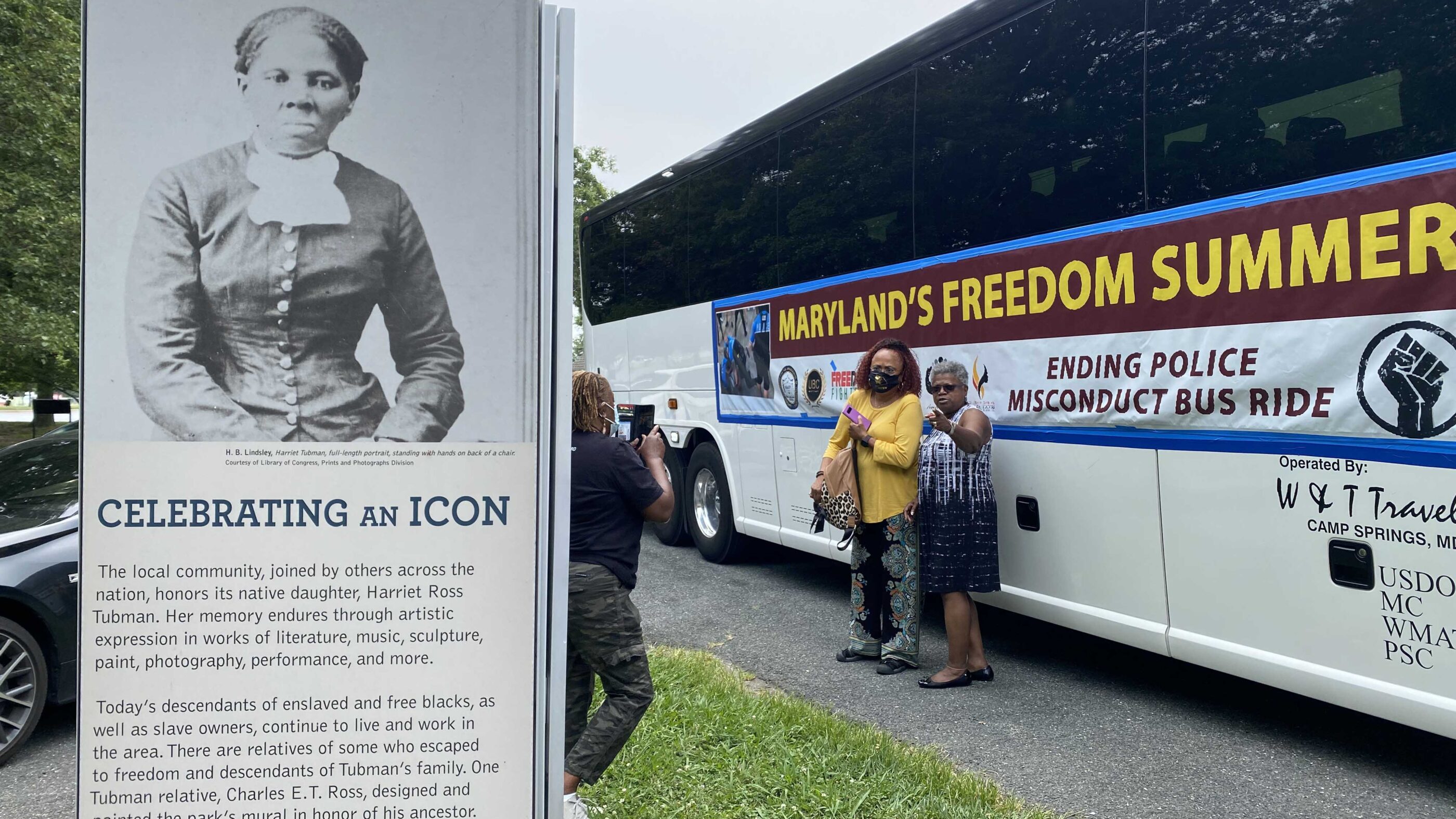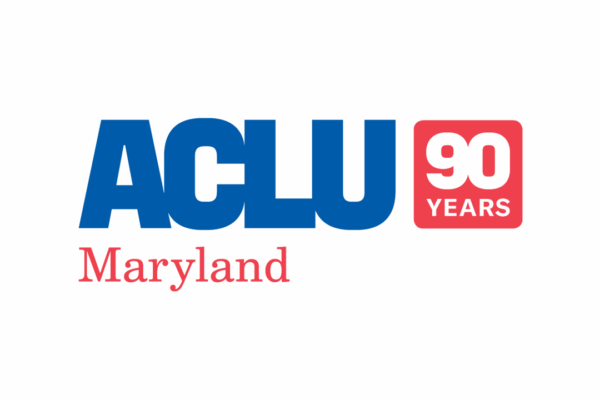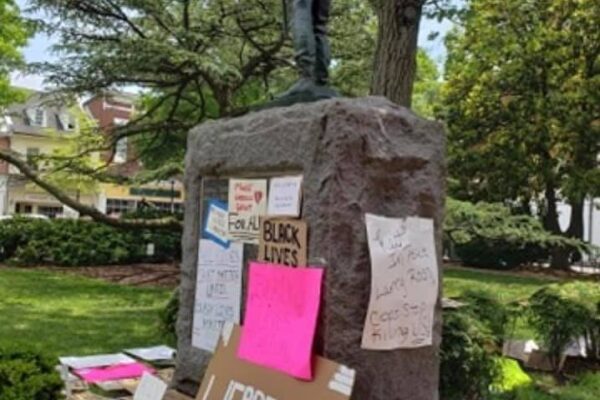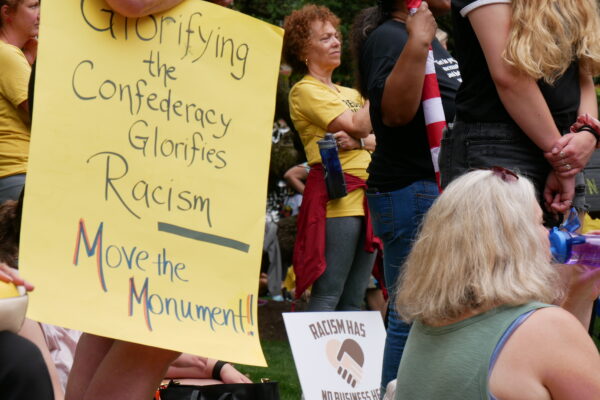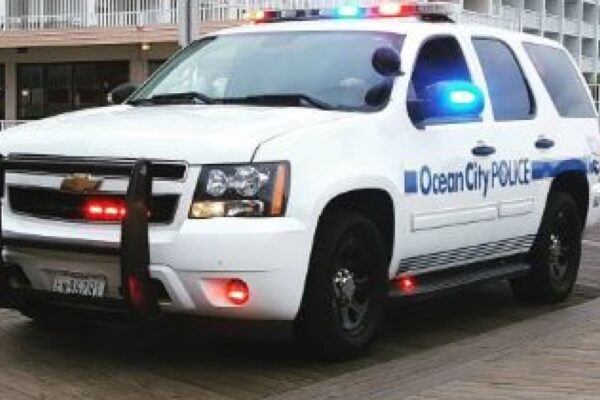Civil rights leaders, religious officials, activists, and elected officials take a “Freedom Ride” from Annapolis to Ocean City.
(Photo by Sergio España)
On July 19th, civil rights leaders, religious officials, activists, and elected officials embarked on a “Freedom Ride” which took them from Annapolis to Ocean City. This summer’s Freedom Ride was intended to call back to the 1960s Freedom Rides, which pointed out racial inequities and opposed white supremacy. The purpose of the 2021 Freedom Ride was to point out racism on Maryland’s Eastern Shore both from the past and present.
As many of us know all too well, racism is not just a thing of the past. It still has its claws sunken into our society. In order to abolish it, we must not only be aware of it, but also challenge it.
So in mid-July, thanks to the leadership of local Civil Rights leaders such as Carl Snowden, Dr. Kirkland Hall, and the Caucus of African American Leaders, a little over 100 Marylanders went on a “Freedom Ride” that left from Annapolis. One of our ACLU of Marylanders, Sergio España, our Director of Engagement and Mobilization, decided to join this journey.
The first stop was Easton, the location of the last standing Confederate statue in the state. Many activists in Talbot County have been working tirelessly to get local officials to move the monument and end this public honoring of a shameful symbol of white supremacy. What is even more degrading is that a statue of Frederick Douglass is situated in the same courthouse green as the Confederate statue.
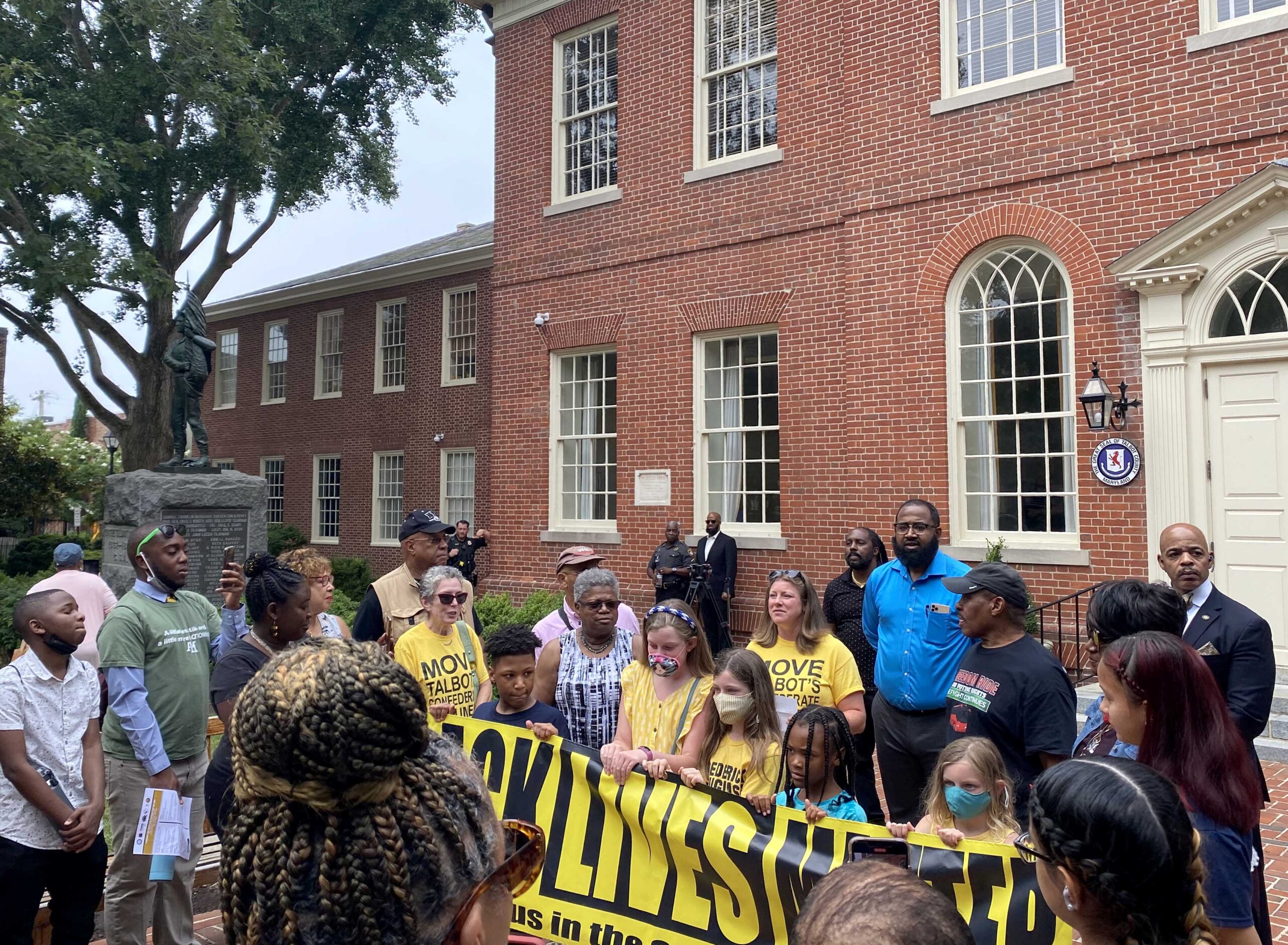
(Photo by Sergio España)
How can we have a statue of Frederick Douglass, a national hero who advocated for equal rights and the freedom of Black people, standing close to a Confederate statue of traitors who actively fought for Douglass’ and other Black people’s continued enslavement?
It is wrong, racist, and demeaning to pretend they are on equal footing.
“This final vestige of the traitorous confederacy has got to go,” said Dana Vickers Shelley, Executive Director of the ACLU of Maryland. “At long last, Maryland is finally moving away from symbols like this, including discarding the Maryland State song, an outdated homage to white supremacy. Like most Confederate monuments, it was built 50 years after the Civil War, during the height of the Jim Crow era when such symbols were erected to put fear into formerly enslaved people, and now it is beyond time for this racist symbol of violence and oppression to be removed.”
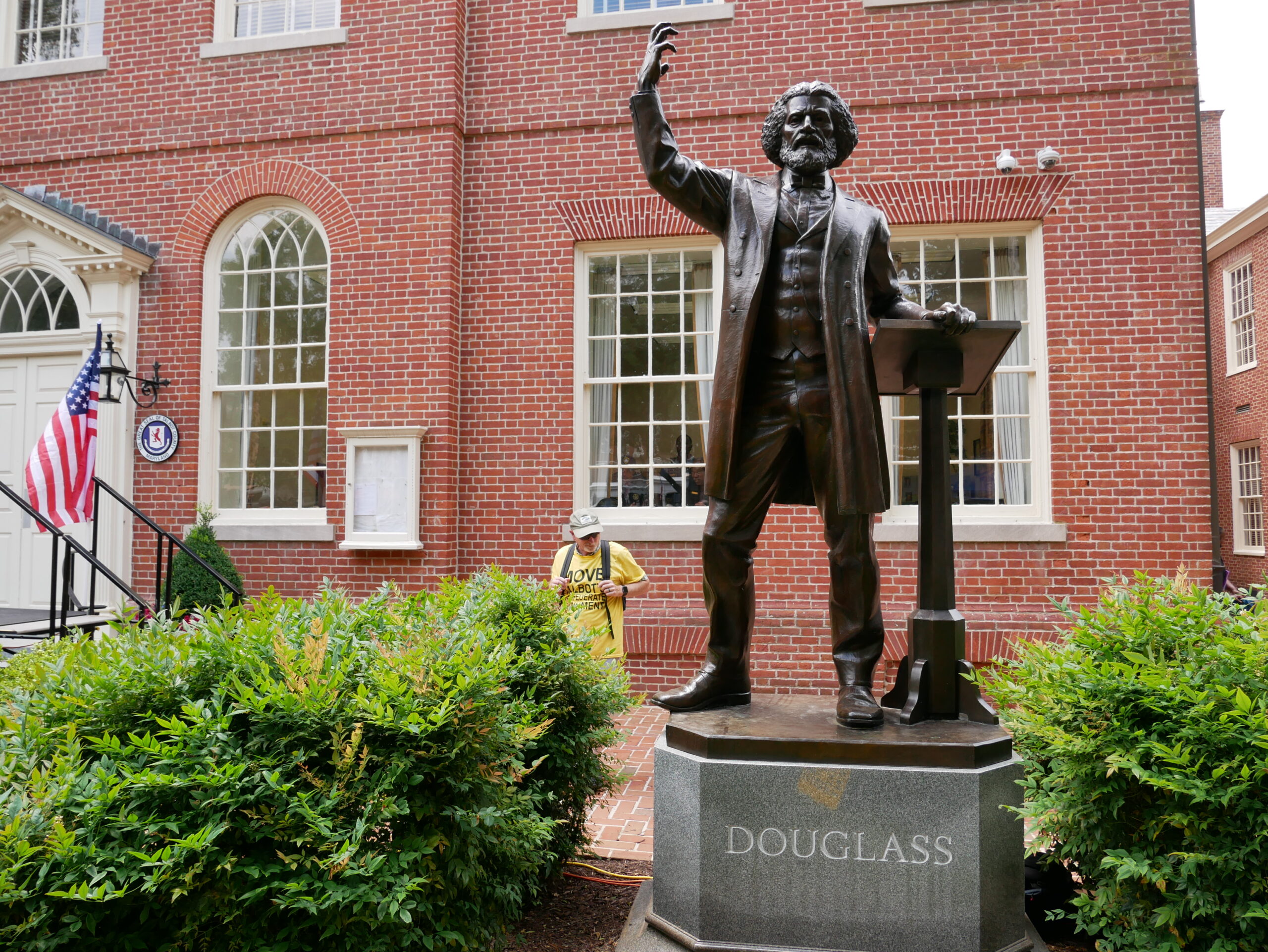
(Photo by Amber Taylor)
What’s even worse is that the Confederate statue is outside a courthouse – a place where everyone is supposed to be able to expect justice. How can Black people realistically expect justice in a courthouse that prominently and proudly displays a symbol of white supremacy and slavery?
Sergio España said: “There is no logical explanation for keeping this statue. It is not about preserving history. This portion of our history can be, and is, reflected through ongoing books, research, and academic study. Erecting a monument meant to acknowledge the maintaining of white supremacy is exactly what it sounds like. Monuments are celebrations. We look up to them. We shouldn’t be looking up to white supremacists. It is racist and we will not tolerate it.”
Talbot County activists are hoping to get rid of the statue soon. A lawsuit brought forth by the NAACP of Talbot County, attorney Kisha Petticolas, and community activist Richard M. Potter, with legal support from the the Washington, D.C. law firm Crowell & Moring LLP and the ACLU of Maryland, is demanding that the statue be brought down. These individuals and organizations are advocating for change and the removal of symbols that honor white supremacy.
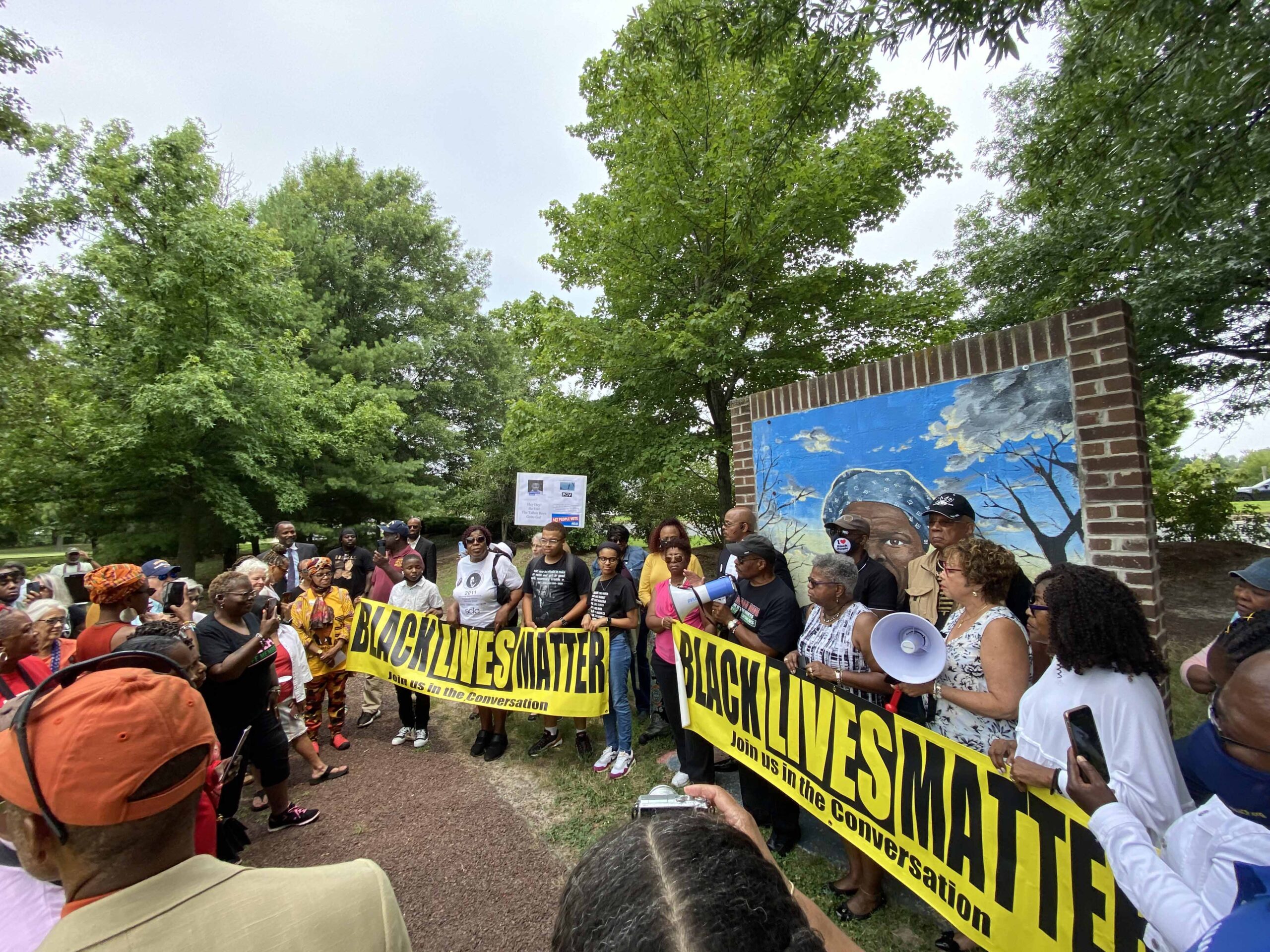
The next stop on the Freedom Ride was Cambridge, where there is an IGSA agreement in effect. These agreements are contracts between the federal government and local governments that allow ICE to use beds from local jails to detain people in order to deport them. Cambridge is in Dorchester County, where we once again see a sharp contrast between the IGSA agreement and a memorial garden dedicated to Harriet Tubman. Tubman was another national hero, born in Cambridge, Maryland who helped many Black people experience freedom and escape slavery through the underground railroad that she played a key role in creating.
A city official from Cambridge and young people from the NAACP’s Glen Burnie Chapter came and spoke during the Cambridge stop. They made calls highlighting the importance of young Marylanders picking up the torch for civil rights. The movement for racial justice that so many Black Marylanders like Harriet Tubman and Frederick Douglass started, continues and is being passed down to our younger generation.
Our faith in equity and justice continues to grow as we watch the torch being passed.
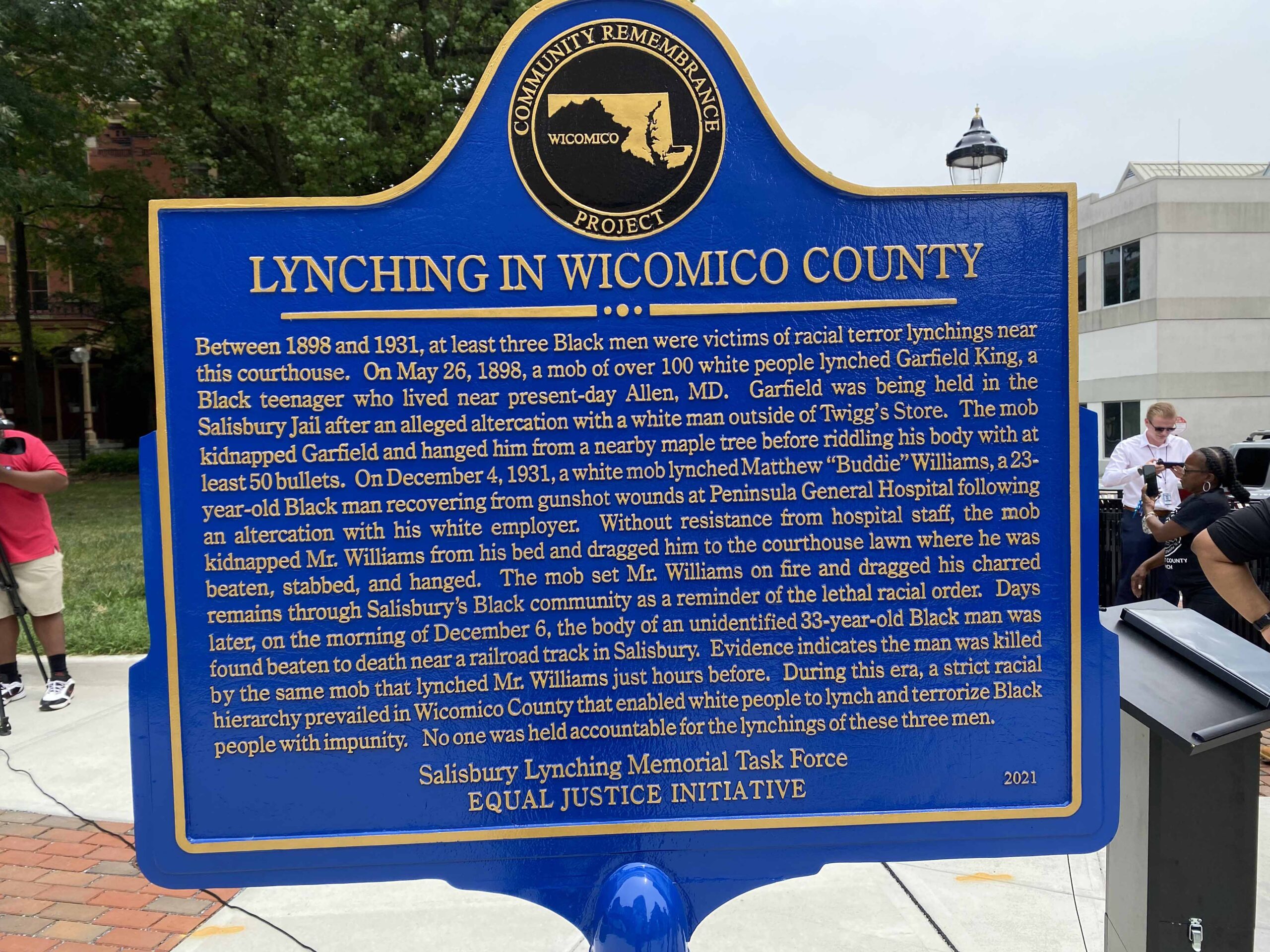
(Photo by Sergio España)
After this stop, the group went to Salisbury to visit a new lynching memorial, commemorated just this year. There have been at least three confirmed lynchings that have taken place at the site of the lynching memorial in the early 20th century. In one of those cases, a man was actually taken from a hospital by a white mob to be lynched.
Race equity has continued to play a key role in the ACLU of Maryland’s work for 90 years. The ACLU of Maryland’s first case was actually one where we tried to help a man who was threatened to be lynched by a white mob. In 1931, Orphan Jones aka Euel Lee was racially mistreated and beaten before he was questioned, brutalized, charged with murder, and denied counsel. We were able to provide Euel Lee with some measure of justice, but that wasn’t enough. Since then, we continued our race equity work.
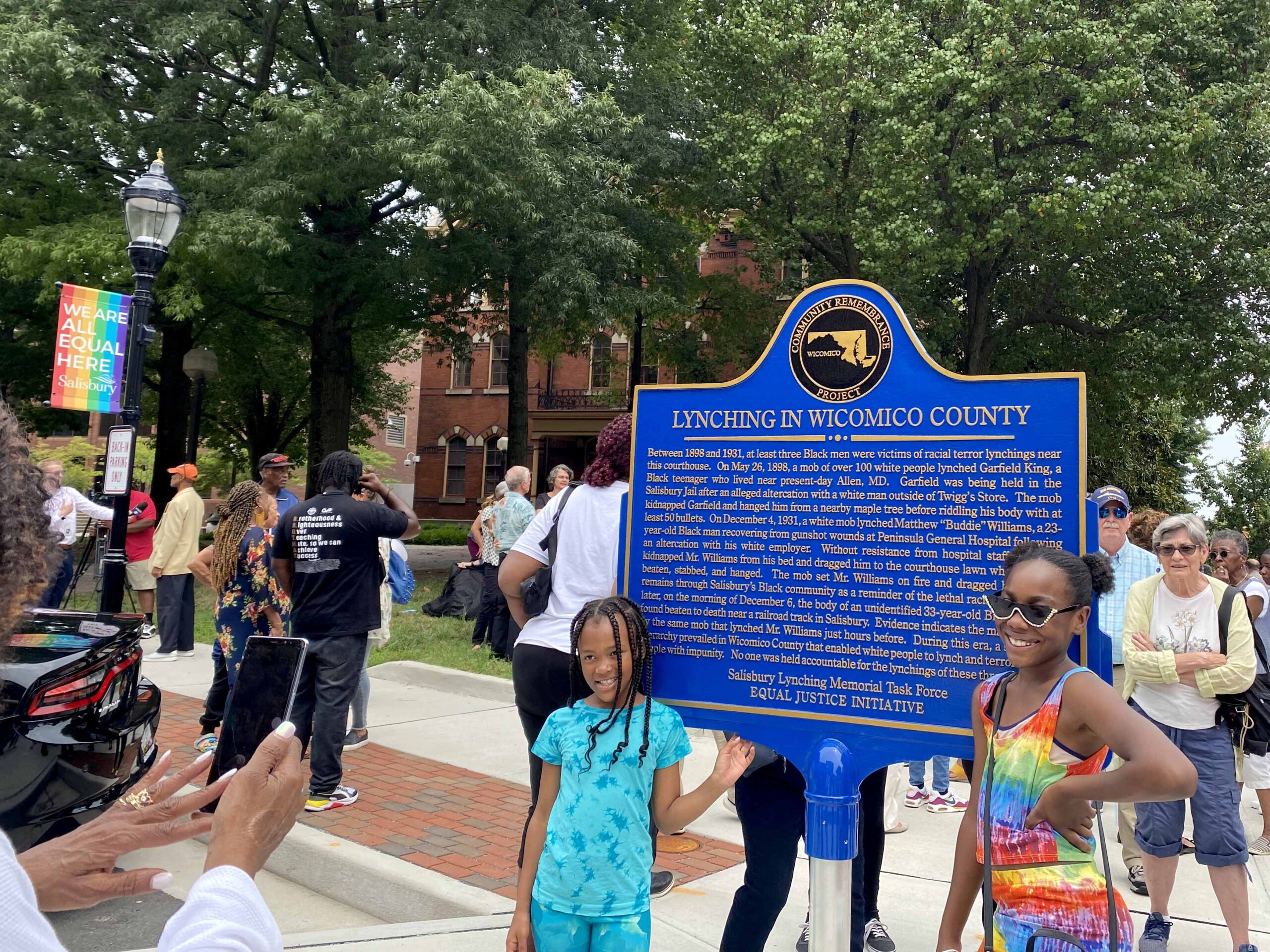
(Photo by Sergio España)
White Marylanders from our past wrongly participated in and witnessed so many cases of unjustified violence against Black people – needless killings and physical abuses that happened with no accountability. This is one of the reasons the Freedom Riders are pushing for reforms, so that race does not have to play a dominant factor in our justice system in the future.
At the Salisbury stop, city officials including Mayor Jacob Day could be heard recounting real life stories about their own experiences with racism in our justice system. In Berlin, Maryland, we heard from local elected officials including Councilman Todd Nock of Pocomoke City and Councilwoman Shaneka Nichols saying that they have been pulled over by police and unfairly treated. They questioned why police do not give a Black person the same treatment as a white person. These Lower Shore officials had much to say about how the climate of racism continues, and is not just a legacy of the past. But if we are willing to recognize it and take action, we can overcome white supremacy.
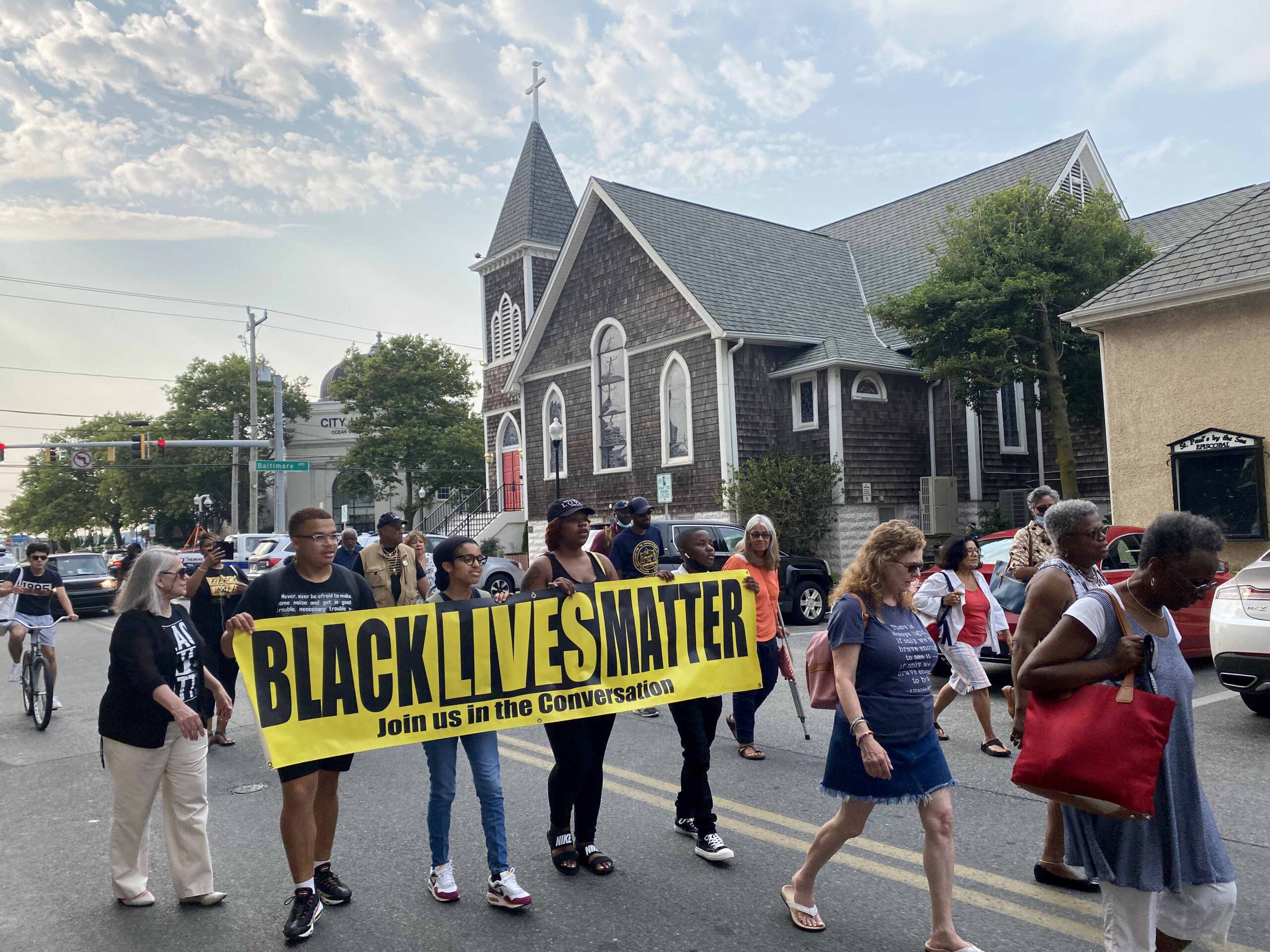
(Photo by Sergio España)
The final stop was Ocean City, where recently there have been several incidents of young Black people being over policed and abused over minor issues. The Freedom Riders took the march up to the boardwalk, so their message could be heard by everyone.
Sergio said: “All in all, it was an amazing experience. A hundred of us were marching while more and more folks on the boardwalk joined in. We were all there to support a better future for Black people in Maryland. We wanted to make sure that everyone knows that Black lives do matter.”
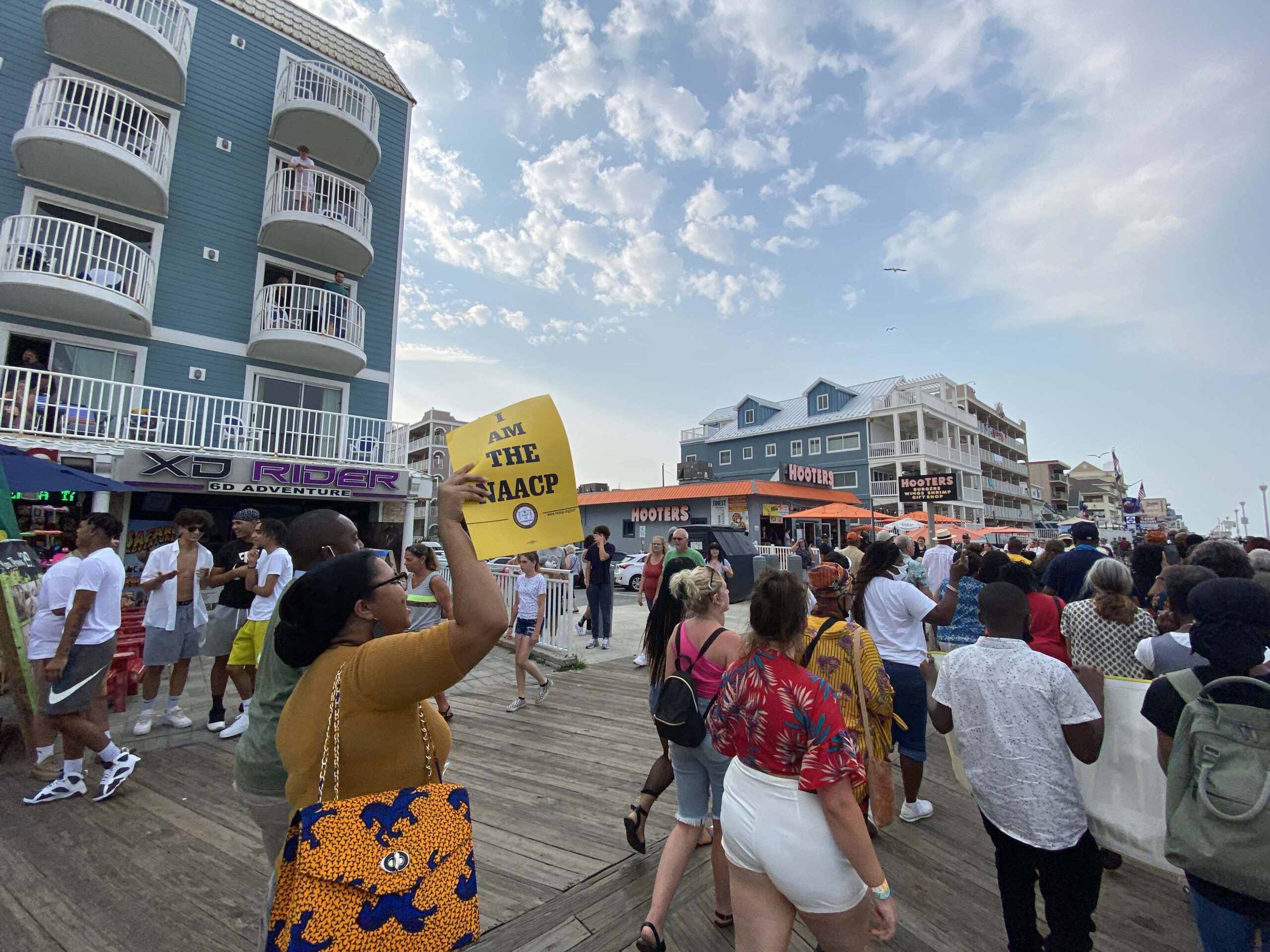
(Photo by Sergio España)
During legal segregation times, Black people were not allowed on the beach in Ocean City. It was both powerful and symbolic for the march to occur there. If we can learn anything from this Freedom Ride, it is that our past is riddled with the legacy of white supremacy. It is in the ground we walk on, the stories we pass down, and the monuments around us. We must come face to face with our racist legacy in order to tear it down and build something better, more equitable from its ashes.
Together, we can advocate and create a better Maryland for all Black people, for all Marylanders. #FreedomRide #BlackLivesMatter

